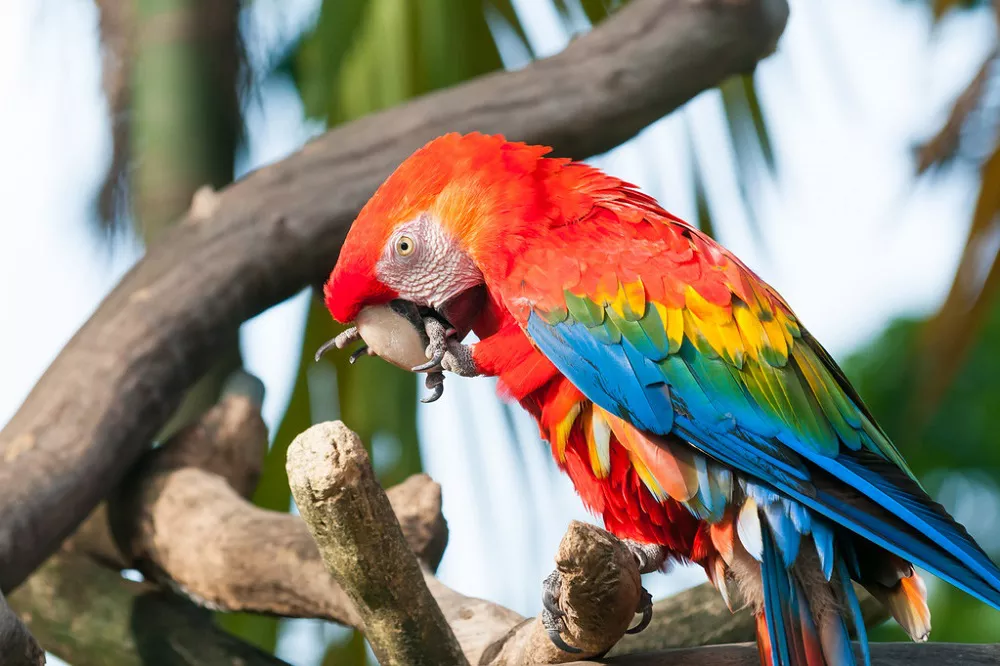The scarlet macaw (Ara macao) is a strikingly beautiful and iconic bird that is widely recognized for its vibrant colors and majestic appearance. This species of macaw is found in Central and South America, and is known for its brilliant red, yellow, and blue plumage.
Appearance:
The scarlet macaw is a large parrot, measuring around 80 to 90 cm (31 to 35 inches) in length and weighing between 900 and 1200 grams (2 to 2.6 pounds). It has a distinctive, long, and pointed tail that can be as long as its body. The bird’s wingspan can reach up to 120 cm (47 inches), making it one of the largest parrots in the world.
The most striking feature of the scarlet macaw is its colorful plumage. The bird has a bright red body with contrasting blue and yellow feathers on its wings and tail. The feathers on its wings are blue on the upper surface and yellow on the underside, while the tail feathers are primarily blue with red at the base. The head and upper neck of the scarlet macaw are featherless and covered with white skin, which is often referred to as “facial patches”. These patches are lined with small, black feathers, and the bird’s eyes are surrounded by a patch of bare, white skin as well.
The beak of the scarlet macaw is large, curved, and very strong, which it uses to crack open hard nuts and seeds. Its feet are zygodactyl, which means they have two toes pointing forward and two pointing backward, allowing the bird to grasp and manipulate objects with great dexterity.
Behavior:
Scarlet macaws are social birds that are known for their loud, raucous calls, which they use to communicate with each other. They are also known for their intelligence and can be trained to perform a variety of tricks and behaviors.
These birds are typically found in pairs or small flocks, and they are highly territorial. They use their vocalizations, displays, and aggressive behavior to defend their territory and communicate with other birds.
Conservation Status:
The scarlet macaw is listed as a species of Least Concern by the International Union for Conservation of Nature (IUCN), but it is still considered to be at risk due to habitat loss and illegal pet trade. The birds are popular pets due to their beauty and intelligence, but capturing them from the wild is illegal and can have a devastating impact on wild populations.
In conclusion, the scarlet macaw is a stunningly beautiful bird with vibrant colors and a majestic appearance. Its striking plumage and distinctive features make it a favorite among bird enthusiasts and animal lovers around the world. However, it is important to remember that these birds are also vulnerable and in need of conservation efforts to protect their populations and their habitats.


 Facebook
Facebook  Instagram
Instagram  Youtube
Youtube 